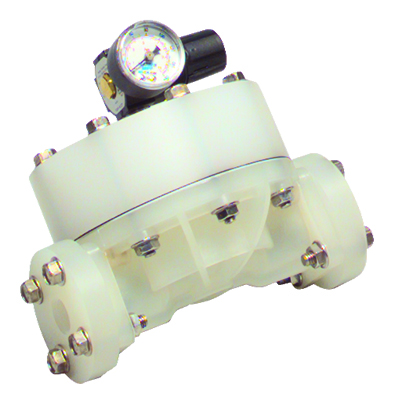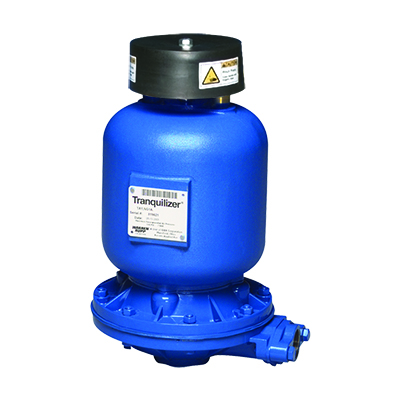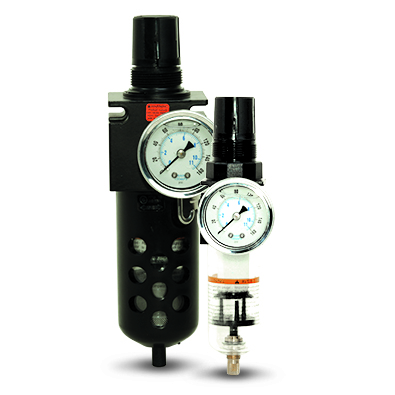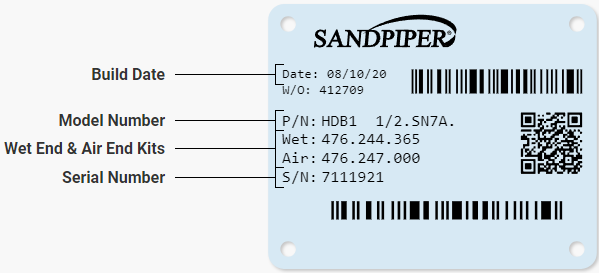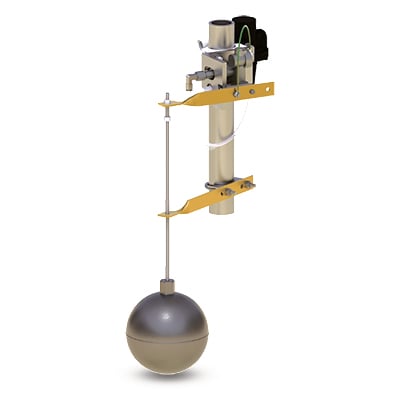 The reliability of air-operated double-diaphragm (AODD) pumps has made them the preferred choice in transfer applications. Their simple design makes them easy to operate, and cost-effective to repair. To achieve top performance, end users must install and operate AODD pumps correctly.
The reliability of air-operated double-diaphragm (AODD) pumps has made them the preferred choice in transfer applications. Their simple design makes them easy to operate, and cost-effective to repair. To achieve top performance, end users must install and operate AODD pumps correctly.
In this blog, we’ll discuss the five most common pumping mistakes end users make when selecting or using these pumps and how these mistakes can be avoided.
1. Knowing the Pump's Chemical Compatibility
Before selecting an AODD pump, you need to have a solid grasp of the chemical properties. These often get overlooked.
Arguably the most important step in the pumping process, making sure that the fluid you’re moving is chemically compatible with the pump's material. This includes elastomers, castings and possibly hardware (if there are plans to submerge the pump). Because safety is a major concern with many chemicals, it’s important to select a pump manufactured from a material that's compatible with chemical being moved.
The two main categories of pump materials to consider are:
- Metal: Metal pumps are durable and robust enough for abrasive liquids and slurries.
- Common metal materials used:
- 316 Stainless Steel 1(order)
- Aluminum (lower abrasive resistance) 2(order)
- Cast iron 3(order)
- Alloy C 4(order)
- Common metal materials used:
- Plastic: Plastic pumps are robust yet lightweight, with a broad range of chemical compatibility.
- Common plastics used:
- Polypropylene 1
- Acetal 4
- Conductive Polypropylene 2
- Conductive Acetal 6
- Conductive PVDF/Kynar 5
- PVDF/Kynar 3
- Common plastics used:
The easiest thing you can do to ensure the fluid you’re moving is chemically compatible with your pump's material is check out the pump manufacturer's chemical compatibility guide. If there are still questions or concerns, you can reach out to your local distributor or a factory application specialist.
2. Taking Operating Temperature into Account
Operating temperature is another critical factor that often gets overlooked. Even though AODD pumps can handle a wide range of temperatures—from cold fluids to those as hot as 220 degrees Fahrenheit (104 degrees Celsius) and beyond—temperature does limit the pump's material of construction.
At higher temperatures, some materials may deteriorate, crack, swell or disintegrate, resulting in less corrosion resistance and premature failure.
At lower temperatures, diaphragm flexibility is typically an issue. Each diaphragm material has a range of working temperatures. Maximum flex life (or the expected longevity of a diaphragm before it requires replacement) can’t be expected if you operate the pump at the extreme limits of its temperature range.
The internal pump components may be rated to an extremely low or high temperature, but that doesn’t imply that the pump body material is rated to the same level, and vice versa. When configuring an AODD pump, it’s important to identify the temperature ratings of all components. AODD pump manufacturers will often publish the temperature limitations of the pump’s various materials of construction.
- For high-temperature applications: Use stainless steel or aluminum pumps with FKM, EPDM, PTFE or PVDF wetted materials.
- For low-temperature applications: Use stainless steel or aluminum pumps with EPDM, FKM or Santoprene wetted materials.
3. Unaware of Sizing/Porting Requirements
Sizing a pump for daily operating parameters involves matching the flow and pressure rating of the pump with the flow rate and pressure required for the process. The desired flow rate in gallons per minute (gpm) or liters per minute (lpm) is an important factor to consider when specifying a pump.
Flow rate is the volume of fluid you can transport within a given time. Knowing the diaphragm pump flow rate will help you:
- Assess if an existing pump isn’t working efficiently
- Determine the correct pump for your application
AODD pumps have flow rates of up to 280 gpm (1,060 lpm). Their flow rate is achieved by simply adjusting the air pressure or discharge head, which gives the pumps an advantage over other pump technologies where it may be difficult or impossible to have that much control over the flow rate.
Looking to increase flow rate? You’ll need a larger pump with larger port sizes. The higher the flow rate, the faster your job gets done. This ensures deadlines are met and allows for increased production. To achieve maximum efficiency, it’s important to determine the required flow rate.
Sizing an AODD Pump
To get the greatest efficiency and longevity when sizing an AODD pump, it's common to go up one porting size if possible.
For example, if you want to move 40 gpm (151 lpm) with 10 feet (3 meters) of head with a 1" (25mm) pump, most AODD manufacturers on the market could achieve that flow rate by pumping water. Unfortunately, the pump would have to work near its maximum capacity and stroke rate, thus leading to greater wear and reduced AODD pump efficiency.
By going up to the next pump size, you can run the pump significantly slower (at reduced strokes per minute), extending the life of the pump while enhancing efficiency (i.e., reducing air consumption).
4. Improperly Torqueing Your AODD Pump
Leakage is a common problem in all pump types. Materials relax over time, causing sealing surfaces to loosen and create leak paths. To ensure the fluid stays in an AODD pump, especially if it's plastic, the pump must be torqued to the manufacturer’s recommended rating.
When installing a new AODD pump, or one that was repaired and placed on the shelf for later use, you should always check the tightness of the pump’s hardware. Though this seems intuitive, many operators don’t know that pump hardware tends to loosen up due to material creep, vibration in transit and temperature changes. It's important that the pump isn't under pressure when tightening hardware. Pumps will often come with a tag to encourage the retightening of this hardware.
5. Not Setting Time Aside for Continual Education
AODD pumps are relatively simple compared to other pumping options. Still, it’s critical to understand AODD pumping technology to get the most out of your pump:
- Read pump manuals to make sure you understand how your pump works.
- Spend a few minutes upfront to ensure proper installation. This will save the time and money you'll spend on correcting potential problems later.
- Build a relationship with your pump manufacturer and/or distributor. Many offer technical assistance by phone, online or even in person.
Choose an AODD Pump Manufacturer You Can Trust
For more than 55 years, SANDPIPER has been a market-leading AODD pump manufacturer. We offer continuous innovation and provide the broadest range of reliable and durable AODD pumps that support an extensive set of markets around the world.
Our tools and resources provide support options—from initial pump selection to troubleshooting and maintenance. For more information, please reach out to one of our seasoned application engineers. You can also contact a local distributor to find a SANDPIPER pumping solution that’s backed by superior quality and workmanship. Someone is always available to pick up the phone to help you get the answers you need.











